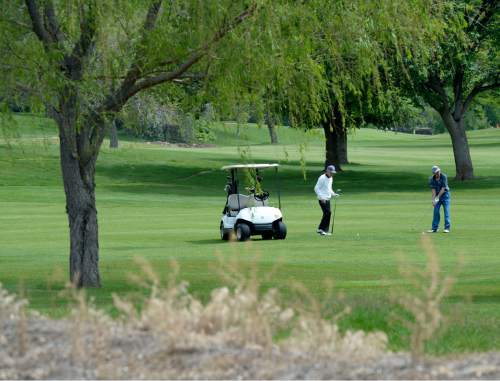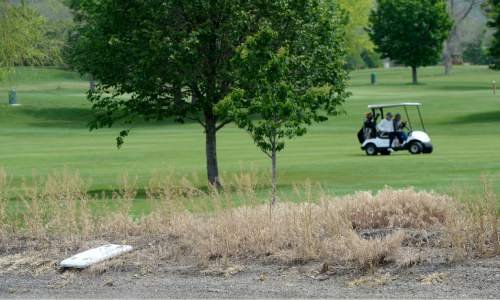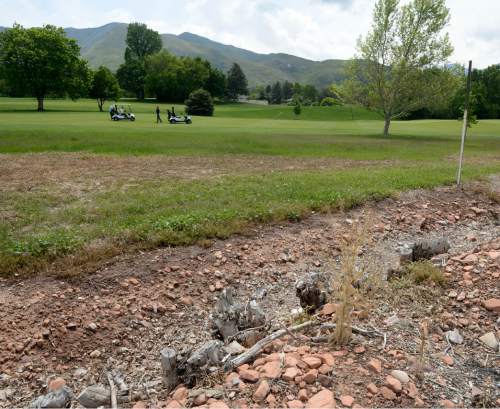This is an archived article that was published on sltrib.com in 2015, and information in the article may be outdated. It is provided only for personal research purposes and may not be reprinted.
Homeowners around Salt Lake City's Bonneville golf course are calling for a mulligan after learning a water-conservation plan would leave turf to brown and die around the perimeter of the links.
Whatever grows in those areas abutting houses near the course at the mouth of Emigration Canyon would be kept to a maximum height of 6 inches, according to city officials. It's a money-saving strategy that will help fund a new irrigation system now being constructed at Bonneville.
But residents fear the new rough — 14.7 acres in all — could create a fire hazard, provide a home for rodents and other vermin and set the stage for duffers searching endlessly for lost balls very near their homes. Not to mention the fact that the brown vegetation will do nothing to enhance the ambiance of their well-tended yards of Kentucky bluegrass.
What galls homeowners even more is that no one at City Hall informed them of what was coming.
About 50 residents gathered Monday at Anderson-Foothill Library to castigate the lack of a public process.
"The city really missed an opportunity to get valuable information and avoid what we've got now," said resident Walt Plum. "Going forward without public input and public process [is a mistake]. You have to step back before you move forward."
Rick Graham, the director of public services, conceded the city was remiss by not including residents in the formulation of the plan that will, in the end, bring a new irrigation system to one of Salt Lake City's premier courses.
Graham apologized to those present but went on to reinforce the notion that there would be brown grass and it's possible that trees may die.
But, he noted, once the $3.2 million irrigation system is in place, the golf course will be better than before. He added that the new rough will be playable.
Salt Lake City's independent golf fund is in the red and could not fund the new irrigation system.
For years, course operators at Bonneville have struggled to keep the old system working.
The new Bonneville system will be funded through significant savings in water costs at the Glendale and Rose Park courses. Those links will shift from costly culinary water to cheap secondary water by tapping into the Jordan River.
The Glendale links, however, could be changed into a multiple-use city park in the near future.
If that occurs, water savings there will not go to the golf fund.
Bonneville's new system also will be more efficient and bring cost savings. However, it appears unlikely that Bonneville can shift to secondary water, unless it is deemed feasible to drill wells. Graham said that alternative continues to be studied.
The plan, at present, would retire the debt in 15 years.
Resident Dave Swanwick told Graham the city should stop the project until a public process can tap residents for input.
In a letter to Graham, Swanwick said the public had no knowledge of the plan or how it came into being.
"The people deserve to see the scope of work and/or contract details with [contractor] Siemens that are fundamental for a full understanding of the project and the situation in which we all find ourselves."
But Graham said the contract has been let and work will go forward. He added, however, that the city will continue to take public comments and determine whether suggestions can be implemented.
"These decisions won't prohibit us from making changes," he said.
Residents in the area continue to circulate a petition asking Mayor Ralph Becker to stop the project until a thorough public process can be completed.
Areas to become dry rough
North and east of driving range — 1.1 acres
North side of hole number one — 0.6 acres
South side of hole number five — 3.0 acres
North of the green on hole number seven — 0.25 acres
West of the tee on hole number 12 — 5.25 acres
South of hole number 15 — 4.5 acres
Total — 14.7 acres
source: Salt Lake City













